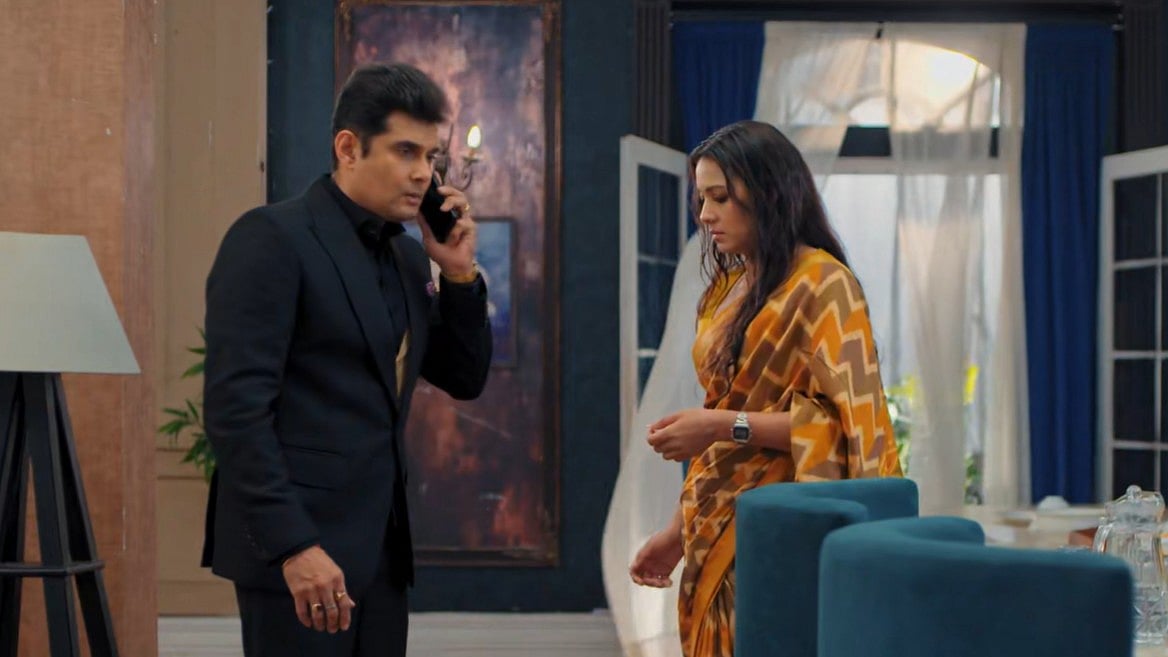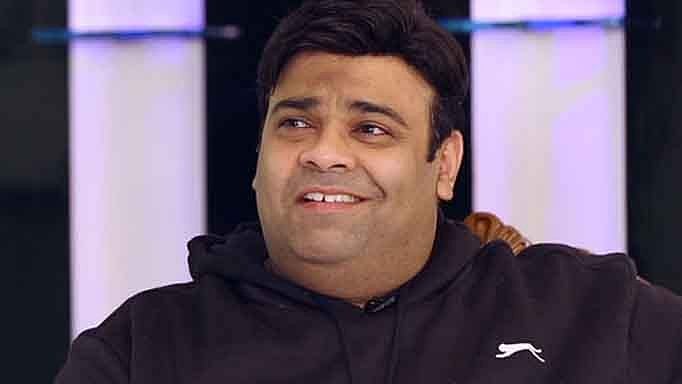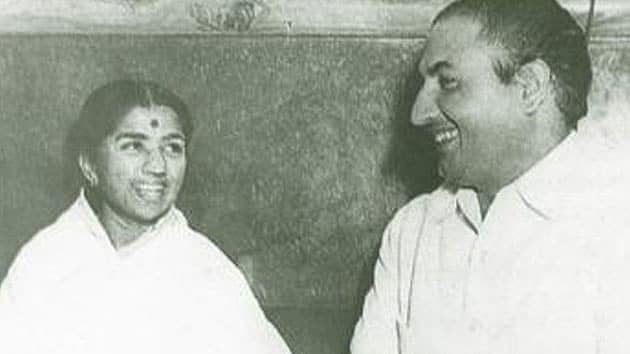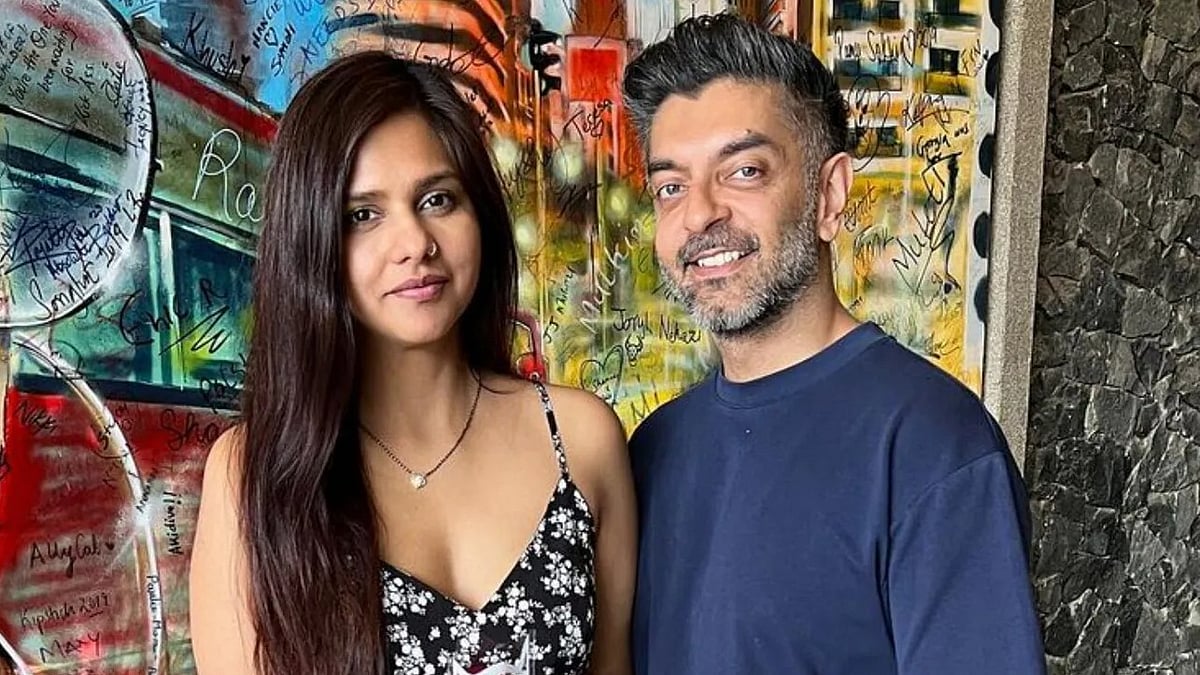"It's not money, fame, or comfort that sustains an actor. He dies the moment his sense of fulfilment, in playing the character, dies," wrote Soumitra Chatterjee, long before death came for him in the winter of 2020.
Above everything else, the aspect that defined Soumitra Chatterjee the best was his lifelong passion for ‘character-acting’. Although the term might seem somewhat abstract and open to interpretation, it makes more sense when seen through the changing landscape of cinema in West Bengal.
In contrast to the leading men, character actors were traditionally seen as less ‘glamorous’ in the golden age. In the case of Bengali cinema, this definitive period would no doubt be marked by 15 distinct years — from the onset of the ‘50s to the mid-’60s:
While on the one hand, we had memorable ‘arthouse classics’ like the ‘Apu Trilogy’ (1955-1959), ‘Ajantrik’ (1958), ‘Baishe Srabon’ (1960), and ‘Ganga’ (1960), the time was also marked by ‘commercial hits’ (a nonsensical binary, for sure) like ‘Harano Sur’ (1957) and ‘Sagarika’ (1965). At the same time, the period also saw the rise of a ‘middle cinema’ championed by the likes of Tarun Majumdar and films such as ‘Kabuliwala’ (1957), ‘Headmaster’ (1958), and ‘Balika Badhu’ (1967).
At a time when Dilip Kumar and Raj Kapur had conquered the Bombay bioscope, the average Bengali middle-class household was engrossed in watching Arunkumar Chattopadhyay become Tollywood’s one-man industry, Uttam Kumar. Cinema, like the inevitable force it was, had truly made its way into every aspect of the Bengali cultural milieu.
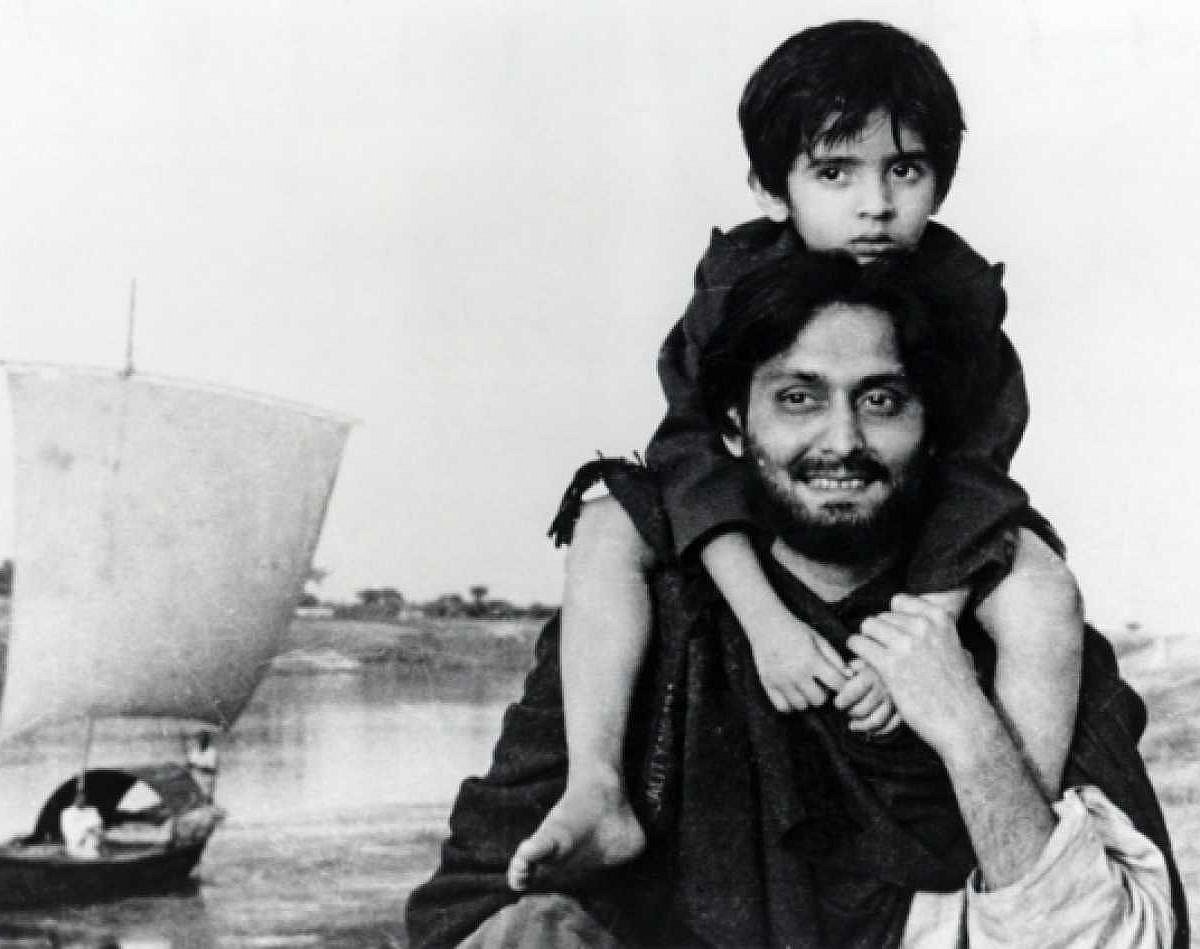
Soumitra Chatterjee in 'Apur Sansar' (1959), directed by Satyajit Ray | File Photo
The reason for this extended introduction is to headline the fact that the death of a cultural icon doesn’t occur in a vacuum. If one is to write about the end, it is only natural to hark back to how it all began.
If Uttam Kumar was the glamorous ‘leading actor’ of the industry, Soumitra Chatterjee gave him a run for his money in the realm of ‘character-acting’. Soumitra’s passion for playing versatile roles burnt bright, even during his last days, which he spent starring in several budget scripts and crowdpleasers.
Often, he spoke of how grateful he was to Manik-da (Satyajit Ray) for offering him the chance to “live several lives” during the course of his own. The same, he mentioned, goes for Tapan Sinha and Tarun Majumdar.
However, it would come as a surprise to many that Soumitra Chatterjee had failed his first-ever screen-test. After auditioning for the lead in ‘Nilachaley Mahaprabhu’, he was disheartened to know that the director, Kartik Chattopadhyay, had opted for Asim Kumar instead for the role.
Undaunted, Soumitra continued orbiting the Tollygunge film circuit. When Satyajit Ray was screen-testing for ‘Aparajito’ (1956), Soumitra was spotted by the chief assistant director around by the recce and summoned inside. On seeing him, Ray had lamented, “If only were you to be a bit younger…”
If his journey had ended there, Bengali cinema would have suffered an immeasurable loss. But time, like the magic cure-all it is, is also self-preserving. It has a way of making sure legacies are made.
In time, Soumitra learnt enough about the film industry to frequent sets with potential. Once again, he found himself where Ray was shooting ‘Jalsaghar’. One look at him and the director knew he had found his actor — Soumitra was signed in for Ray’s next film, ‘Apur Sansar’, and the tale beyond is known to almost everyone at this point.
Both these men would eventually go on to shape each other’s legacy in more ways than one. Appearing in as many as fourteen of his films, Soumitra’s centrality to Ray’s work goes down in the cinematic hall of fame, as akin to other key actor-director collaborations in the history of film — Robert De Niro or Leonardo DiCaprio and Martin Scorsese, Toshiro Mifune and Akira Kurosawa, or Max von Sydow and Ingmar Bergman.

Soumitra Chatterjee with Uttam Kumar | File Photo
There are only a few questions of existential crises that got woven into the cultural fabric of the community — East Bengal vs Mohun Bagan is one, linked to the Ghoti-Bangal feud that has its roots in the painful memories of Partition. With Soumitra’s entry into cinema, the ever-indomitable Bengali intelligentsia got its new topic for lunchtime debate — Soumitra Chatterjee vs Uttam Kumar.
How did Soumitra create his own parallel universe, that was so different from the prevailing studio system of the time, in tandem with the glamourous star persona of Uttam Kumar? The man had often attempted to answer this question himself. In one interview, Soumitra contended that just like Uttam Kumar had once stormed in on the conventional cinematic tradition of Chhabi Biswas, he too had, in turn, revolutionised Uttam Kumar’s tradition with the refreshingly new tool of social realism, which had arrived in Bengal by the ‘60s, piggybacked on cinephiles inspired by Italian neorealism at around the same time.
This tradition of realism flowed through Soumitra Chatterjee's career all throughout his life, constructing and deconstructing his role in cinema. This is also one reason why we often tend to remember the cerebral deductions of Feluda, the ambitious yearnings of Apu, and the curmudgeonly coach in Kony more than the actor himself.
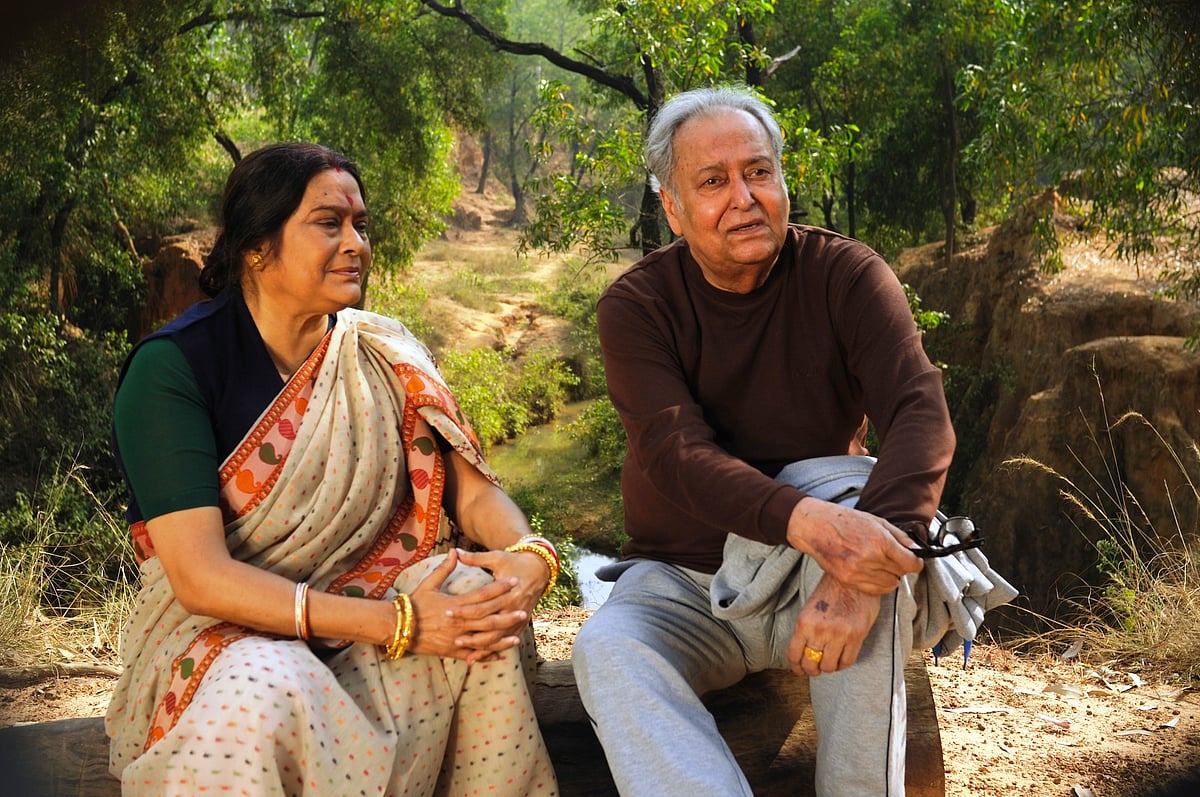
Soumitra Chatterjee and Swatilekha Sengupta in 'Bela Seshe' (2015) | Windows Production
During the course of an acting career, an actor can sometimes shift between leading roles and secondary roles. Some leading actors, as they get older, find that access to leading roles is limited by their increasing age. But Soumitra never needed a separate second innings in his life. As he aged, so did his hunger for versatile roles. He gave us everything — from the rollicking jig in market hits like ‘Ke Tumi Nandini’ (which became the song for every college reunion ever since) to the nonchalant lover in ‘Saat Paake Bandha’ or the forlorn affair, one for the books, in ‘Charulata’.
He also starred in numerous budget/commercial flicks of the past decade, which have been frowned upon by holier-than-thou critics, but nevertheless kept his passion alive.
Even before Soumitra appeared in film, he was studying IPTA’s street performances and making his mark in theatre with Sisir Kumar Bhaduri as his mentor.
After over two decades of cinema, Soumitra often longed for a return to the stage. Year after year, he met houseful auditoriums with critically acclaimed productions of ‘Rajkumar’ (1982), ‘Nilkantha’ (1988), ‘Ghatak Biday’ (1990) or much later, ‘TikTiki’ (1995), an adaptation of the Tony Award-winning Broadway production ‘Sleuth’. In fact, even during the COVID-19 pandemic, his famed production ‘Phera’ performed its 100th show.
Despite a career in cinema versatile beyond measure, Soumitra Chatterjee saw limitless potential in theatre. The octagenarian had been performing Shakesperean theatre regularly in a play by Suman Mukhopadhyay, based on ‘King Lear’.
What explains the inexplicable hunger to act? Can the promise of a lifetime of potential fame bring a person to traverse the uninsured career of an actor? Or is there a deeper want for self-actualisation, the lust to live several lives, attached to it? The man often wondered about the answers to these questions in his writings.
When Soumitra, in the titular role of King Lear, asked before a full house, “Who is it that can tell me who I am?” — was he reflecting on his own conclusions? ‘Why do you act?’ — Perhaps there exists no single answer to this question, pondering eternally on which was one man and phenomenon, Soumitra Chatterjee.






